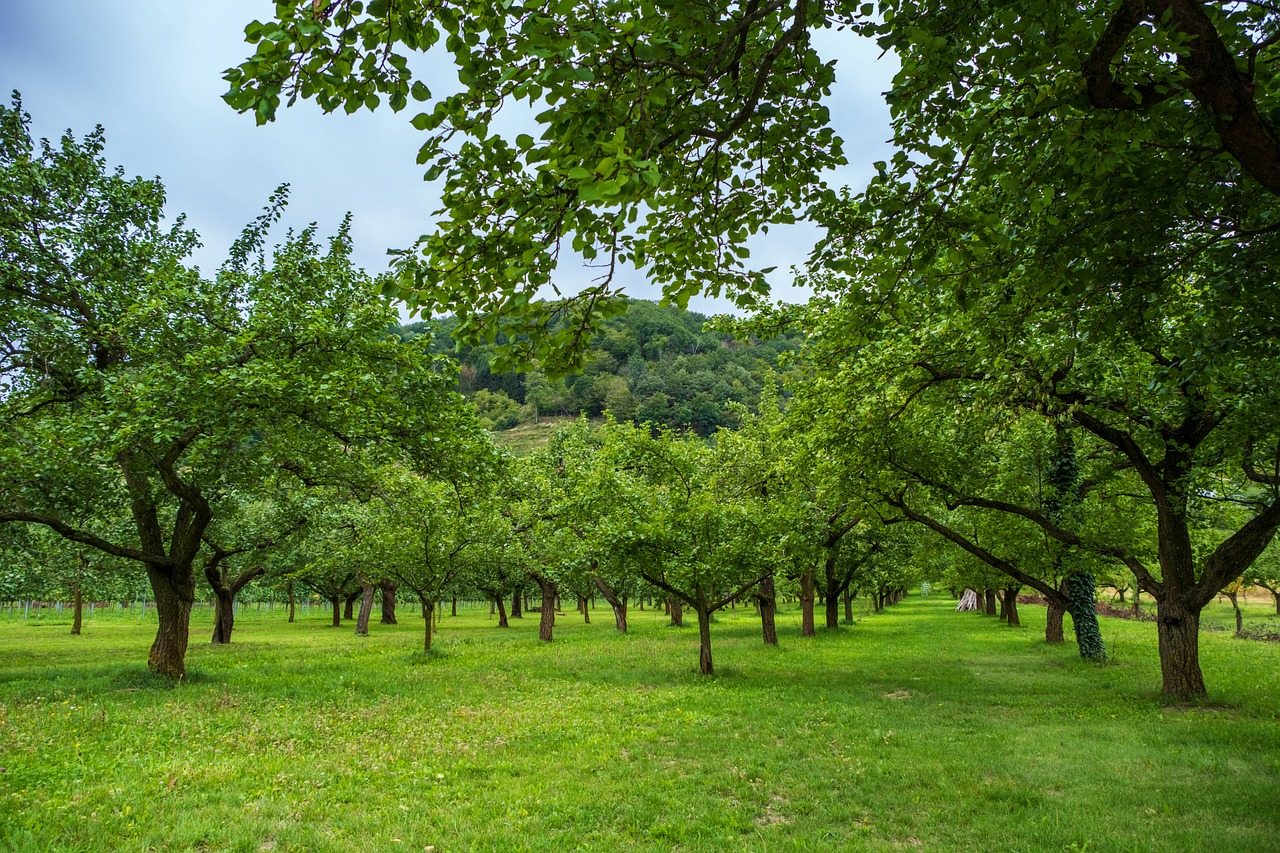Small ornamental trees offer a unique way to enhance the beauty of your yard. These trees serve as stunning accent pieces that add character and charm to any landscape. Their compact size makes them ideal for smaller spaces, patios, or gardens where larger trees might overwhelm the area. With a variety of shapes, colors, and textures available, ornamental trees can transform an ordinary yard into a vibrant outdoor space.
Incorporating small trees into your landscaping design can also provide numerous benefits. They can create focal points, frame views, and add layers of visual interest. Additionally, many ornamental trees produce beautiful flowers or foliage that change with the seasons, offering year-round appeal. Whether you are looking for shade, privacy, or simply a beautiful addition to your garden, there is an ornamental tree perfect for your needs.

Before selecting the right species for your yard, it is important to consider several factors. These include the climate in your region, the amount of sunlight your garden receives, and the overall aesthetic you wish to achieve. Below is a table that highlights some popular small ornamental trees along with their key characteristics:
| Tree Name | Height | Sunlight Requirements | Bloom Period |
|---|---|---|---|
| Japanese Maple | 10-25 feet | Partial shade to full sun | Spring |
| Flowering Dogwood | 15-30 feet | Partial shade to full sun | Spring |
| Crabapple | 15-25 feet | Full sun | Spring |
| Redbud | 20-30 feet | Full sun to partial shade | Early spring |
| Magnolia | 10-20 feet | Full sun | Spring to summer |
Choosing the Right Ornamental Tree for Your Yard
Selecting the right small ornamental tree can greatly impact the overall look of your landscape. Consider the following factors when making your choice:
- Space Availability: Assess the space where you plan to plant. Measure the area to ensure that the tree will fit comfortably without crowding other plants.
- Soil Type: Different trees thrive in different soil types. Conduct a soil test to determine pH and nutrient levels.
- Climate Adaptability: Choose a tree species that is well-suited for your climate zone. This ensures better growth and longevity.
- Aesthetic Preferences: Think about the colors and textures you want to incorporate. Some trees offer stunning foliage while others provide vibrant flowers.
- Maintenance Needs: Consider how much time you are willing to commit to care. Some trees require more pruning and care than others.
By understanding these factors, you can select an ornamental tree that not only fits well within your landscape but also thrives in its environment. Small ornamental trees are versatile additions that can complement various architectural styles, making them suitable for both modern and traditional homes.
As you explore the options available, it is helpful to visualize how each tree will look at different stages of maturity. Imagining the tree at its full height and spread can help you make an informed decision about its placement in your yard.
The right small ornamental tree can turn a simple garden into a picturesque setting, providing beauty and joy for years to come. With careful consideration and planning, your outdoor space can flourish with the charm of these delightful trees.
Popular Types of Small Ornamental Trees
When considering small ornamental trees, it is essential to explore various species that thrive in different environments and offer unique aesthetics. Below are some popular types of small ornamental trees that can enhance your yard:
- Japanese Maple: Known for its stunning foliage, the Japanese maple displays vibrant colors ranging from deep red to bright green. This tree can grow to a height of about 10-25 feet and is perfect for adding a touch of elegance to any garden.
- Flowering Dogwood: This beautiful tree features white or pink flowers in spring and attractive red berries in the fall. It typically reaches heights of 15-30 feet and thrives in partial shade.
- Crabapple: The crabapple tree is celebrated for its showy spring blossoms and colorful fruits. It generally grows to 15-25 feet, providing visual interest throughout the seasons.
- Redbud: This tree is known for its striking pink flowers that bloom before the leaves appear. Redbuds can reach a height of 20-30 feet and are ideal for creating a vibrant focal point in your landscape.
- Magnolia: Magnolias are famous for their large, fragrant flowers. They typically grow to 10-20 feet and can add an aromatic quality to your yard.
Benefits of Planting Small Ornamental Trees

Integrating small ornamental trees into your landscape offers several advantages:
- Aesthetic Appeal: Small ornamental trees can serve as focal points in your garden, drawing the eye and enhancing overall beauty.
- Seasonal Interest: Many ornamental trees showcase colorful blooms or unique foliage that changes with the seasons, ensuring year-round visual appeal.
- Wildlife Habitat: These trees can provide shelter and food for various bird species and beneficial insects, promoting biodiversity in your garden.
- Privacy Screening: Some small trees can act as natural barriers, providing privacy from neighbors while adding beauty to your yard.
- Low Maintenance: Many ornamental trees require minimal care, making them suitable for busy homeowners who want a beautiful landscape without extensive upkeep.
Planting and Care Tips

To ensure the health and longevity of your small ornamental trees, consider the following planting and care tips:
- Select the Right Location: Choose a spot that allows ample sunlight and provides enough space for the tree to grow. Avoid areas with excessive wind or poor drainage.
- Prepare the Soil: Before planting, enrich the soil with organic matter. A well-draining soil mix will help promote healthy root growth.
- Watering: Newly planted trees need consistent moisture. Water deeply and regularly during dry spells, especially in their first few years.
- Fertilization: Apply a balanced fertilizer in early spring to encourage healthy growth. Follow the specific recommendations for the tree species you choose.
- Pruning: Regular pruning will help maintain shape and remove any dead or diseased branches. This practice also encourages better air circulation within the canopy.
With these tips in mind, you can create a thriving environment for your small ornamental trees. As they grow and mature, they will become integral parts of your landscape, contributing beauty and character to your outdoor space.
Design Ideas with Small Ornamental Trees
Incorporating small ornamental trees into your landscape design can enhance its overall aesthetic. Here are some creative ideas on how to use them effectively:
- Corner Accents: Plant a small tree at the corner of your yard or garden bed to create a natural focal point that draws attention and adds depth.
- Pathway Borders: Line pathways or driveways with small ornamental trees to create a welcoming entrance and guide visitors through your landscape.
- Mixed Planting Beds: Combine small trees with shrubs and perennials in mixed planting beds for a diverse and colorful display throughout the seasons.
- Courtyard Features: Use small ornamental trees to create serene courtyard spaces. Their compact size makes them perfect for intimate settings.
The versatility of small ornamental trees allows homeowners to explore various design approaches, ensuring that their outdoor spaces reflect personal style while enhancing natural beauty.

Seasonal Considerations for Small Ornamental Trees
When planning your landscape with small ornamental trees, it is important to consider their seasonal changes. Each season brings unique characteristics that can enhance the beauty of your yard. Understanding these seasonal aspects can help you select the right trees for year-round appeal.
Spring
Spring is a vibrant season for small ornamental trees, as many species burst into bloom. During this time, trees such as flowering dogwoods and magnolias showcase stunning flowers that create a spectacular display. This blooming period is crucial for attracting pollinators like bees and butterflies, which are essential for a healthy garden ecosystem.
Summer
In summer, the foliage of small ornamental trees takes center stage. Trees like Japanese maples offer striking leaf colors that can range from bright greens to deep purples. The lush canopies provide shade and comfort in outdoor spaces. Additionally, summer is a great time for pruning and maintenance to ensure healthy growth and shape.
Autumn
As autumn approaches, many ornamental trees put on a colorful display as their leaves change. Redbuds and some varieties of crabapple exhibit brilliant reds and golds, creating a picturesque landscape. This seasonal transformation not only enhances the visual appeal but also provides an opportunity to enjoy the changing environment.
winter
During winter, while many trees lose their leaves, small ornamental trees still have much to offer. The unique bark textures and shapes of trees like the Japanese maple become more pronounced without foliage. Additionally, some species may provide interesting silhouette forms against a snowy backdrop, adding charm to your winter landscape.
Common Pests and Diseases
<pLike any plant, small ornamental trees are susceptible to various pests and diseases. Being aware of these potential issues can help you take preventive measures to keep your trees healthy:
- Aphids: These small insects can cluster on new growth, sucking sap from the leaves. Regular monitoring and introducing beneficial insects like ladybugs can help manage aphid populations.
- Scale: Scale insects attach themselves to branches and leaves, causing yellowing or wilting. Applying dormant oil in early spring can help control these pests.
- Leaf Spot: This fungal disease leads to dark spots on leaves, which can eventually cause them to drop. Ensuring good air circulation and avoiding overhead watering can minimize leaf spot occurrences.
- Powdery Mildew: A common issue in humid conditions, powdery mildew appears as a white powdery substance on leaves. Fungicides or organic solutions like neem oil can help treat this condition.
- Canker Diseases: These diseases affect the bark and wood of trees, leading to dieback. Pruning infected areas and ensuring proper care can prevent their spread.
Choosing Native Species
Selecting native small ornamental trees can provide numerous benefits for your landscape. Native species are adapted to local conditions and typically require less maintenance than non-native varieties. They also support local wildlife and contribute to biodiversity in your area.
Some popular native ornamental trees include:
- Eastern Redbud: This tree is known for its beautiful pink flowers in early spring and heart-shaped leaves that provide excellent shade.
- Serviceberry: Producing white flowers in spring and edible berries in summer, the serviceberry provides food for both birds and people.
- American Hornbeam: Also called musclewood, this tree has attractive bark and dense foliage, making it an excellent choice for smaller spaces.
- Black Cherry: This tree offers lovely white flowers in spring followed by dark cherries, which attract various bird species.
By choosing native species, you can create a landscape that not only looks beautiful but also supports local ecosystems and wildlife.
Creating a Sustainable Landscape with Small Ornamental Trees
Integrating small ornamental trees into your yard not only enhances its beauty but also contributes to a sustainable environment. These trees play a crucial role in maintaining ecological balance by providing habitats for various wildlife and promoting biodiversity. Here are some ways small ornamental trees contribute to sustainability:
- Carbon Sequestration: Trees absorb carbon dioxide from the atmosphere, helping to mitigate climate change. Even small ornamental trees contribute to this important process.
- Soil Erosion Prevention: The root systems of trees help stabilize soil, reducing erosion and promoting healthy soil structure.
- Water Conservation: Trees can reduce runoff and improve water quality by absorbing excess rainwater and allowing it to filter through the soil.
- Microclimate Creation: By providing shade and reducing heat, trees can create cooler microclimates, benefiting other plants and wildlife in the area.
Choosing small ornamental trees that are native to your region can further enhance these benefits. Native species are adapted to local conditions, requiring less water and fewer resources than non-native varieties. They thrive in the local ecosystem, providing essential food and shelter for indigenous wildlife.
Maintaining Your Small Ornamental Trees
Proper maintenance is essential for the longevity and health of your small ornamental trees. Here are some maintenance tips to keep in mind:
- Regular Watering: Newly planted trees need consistent watering, especially during dry spells. Ensure deep watering to promote strong root growth.
- Mulching: Applying a layer of mulch around the base of the tree helps retain moisture, suppress weeds, and regulate soil temperature.
- Pruning: Regular pruning helps maintain shape and remove any dead or diseased branches. This promotes better air circulation and encourages healthy growth.
- Pest Management: Monitor your trees for signs of pests or diseases. Early detection and appropriate treatment are key to maintaining tree health.
- Fertilization: Depending on the tree species and soil conditions, consider applying fertilizer in early spring to provide essential nutrients for optimal growth.
Implementing these maintenance practices will help ensure that your small ornamental trees remain healthy and vibrant for years to come, enhancing your landscape’s beauty and ecological value.
Final Thoughts
Small ornamental trees are more than just decorative plants; they are valuable assets to any landscape. Their aesthetic appeal, seasonal interest, and ecological benefits make them ideal choices for homeowners looking to create beautiful outdoor spaces. When selecting trees for your yard, consider factors such as climate adaptability, maintenance requirements, and the specific characteristics that will enhance your landscape design.
By incorporating native species into your garden, you can contribute positively to local ecosystems while creating a visually stunning environment. The careful selection of small ornamental trees allows for creative landscaping solutions that reflect personal style while promoting environmental sustainability.
As you plan your outdoor space, remember that small ornamental trees can provide beauty and functionality. From creating inviting pathways to attracting wildlife, these trees play a significant role in enriching your yard. With thoughtful planting and care, your garden can flourish with the charm of these delightful additions.
The journey of transforming your yard with small ornamental trees is not just about beautification; it is about creating a lasting legacy for nature and future generations. Enjoy the process of selecting, planting, and nurturing these wonderful trees as you enhance your outdoor living space.
